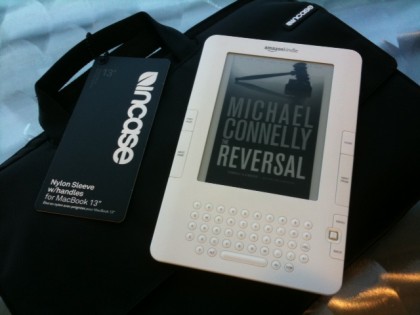
One of the best conversations I had at CES this year was with the VP of sales and marketing for a company called Green Plug. Now granted, meeting with Graeme Finlayson was also the first chance I’d had to sit down in many hours, but even so, the GreenPlug story is one I’ve wanted to tell since coming back from Vegas.
GreenPlug was founded in 2006 with the goal of fixing the “broken” power model. You know how there are a bazillion different adapters for a bazillion different gadgets? Well, it would be nice to standardize them all and be assured that when your lovely little laptop power cord breaks, there’s another nearby that can be switched out from a different device. Unfortunately, as anyone in the industry knows, there is huge resistance from manufacturers around standardizing power accessories. According to Finlayson, the technical challenges of creating one power adapter for all major devices is essentially solved, though there would likely need to be different versions for different power needs – like a 15-50 watt version, a 50-150 watt version, etc. Trying to get manufacturers on board is the major nightmare. Apparently the IEEE is attempting to standardize power adapters for laptops, but when we’ll get any concrete solutions from that initiative remains to be seen.
Meanwhile, Green Plug has extended its efforts beyond just creating a universal power adapter. In order to make powering devices more efficient, the company is proposing to add a little CPU, and a new communication wire into the cord that goes between your device and the outlet on the wall. The purpose is to create a feedback loop that communicates battery status, enabling functions like rapid charge and power shut-off when a battery is powered to capacity.
This is a fundamental shift in the way we think about power. Instead of dumb power cords, we’re suddenly looking at intelligent power networks. The Green Plug concept also provides another way to connect devices into the smart grid, which has its own set of implications. That new communication wire makes it potentially possible to connect with a larger grid even when a device, for all other intents and purposes, is turned off.
